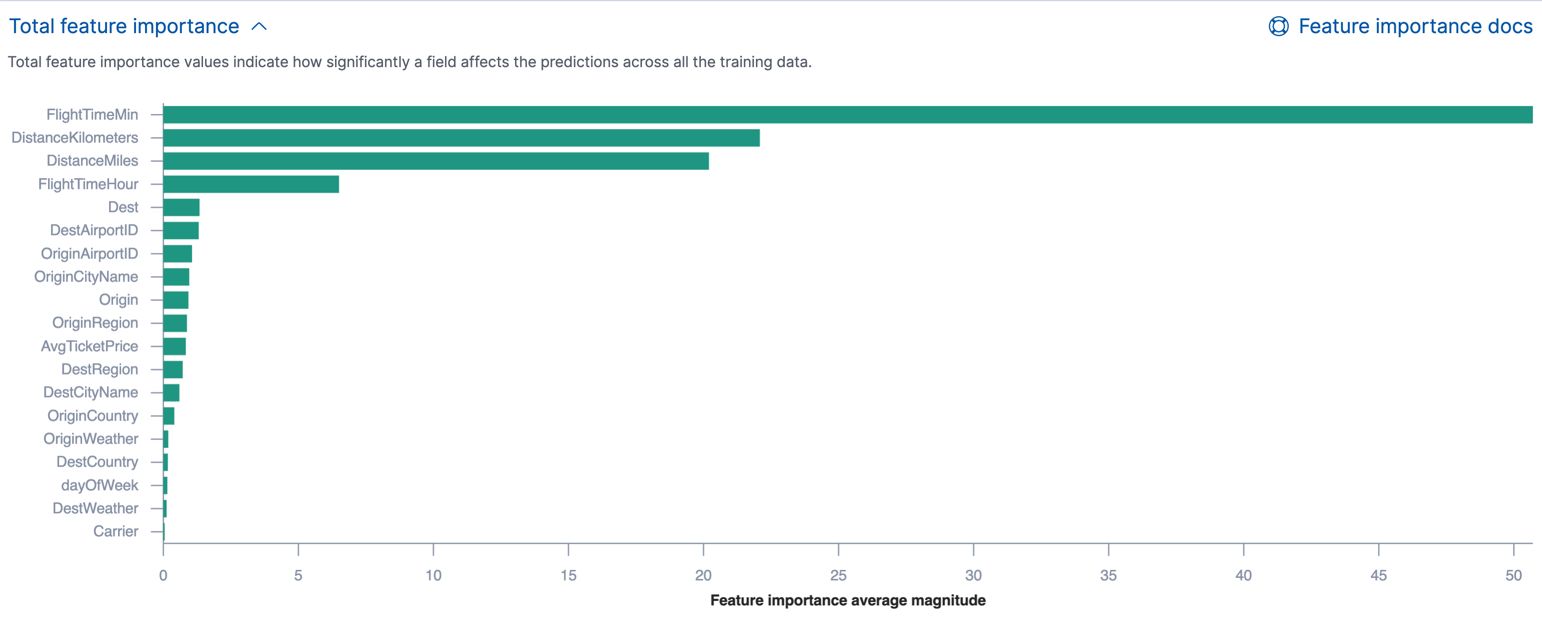Introduction
Welcome to the exciting world of machine learning! Over the past few decades, there has been an exponential growth in data generation and analytical possibilities. As a result, machine learning has emerged as a powerful tool to extract insights, make predictions, and automate processes. The concept of machines learning from data and improving their performance over time has captivated researchers, businesses, and enthusiasts alike.
But what exactly is machine learning? Simply put, machine learning is a subset of artificial intelligence that focuses on the development of algorithms and models that enable computers to learn from and make predictions or decisions based on data. It involves the creation of statistical models and algorithms that allow the machines to analyze and interpret vast amounts of data, identify patterns, and make informed decisions or predictions.
The applications of machine learning are vast and span across various industries. From healthcare and finance to transportation and entertainment, machine learning has revolutionized how we approach complex problems and make decisions. Companies are using machine learning algorithms to automate processes, improve customer experiences, optimize operations, and develop innovative products.
So why is machine learning so interesting? What sets it apart from other fields of study? There are several reasons that make machine learning a fascinating and promising field:
What is Machine Learning?
Machine learning is a subset of artificial intelligence that focuses on the development of algorithms and models that enable computers to learn and make predictions or decisions based on data. It involves the creation of statistical models and algorithms that allow machines to analyze and interpret vast amounts of data, identify patterns, and make informed decisions or predictions.
At its core, machine learning is about teaching computers to learn and improve from experience without being explicitly programmed. Instead of providing explicit rules or instructions, machine learning algorithms enable computers to learn automatically from data and adjust their performance accordingly.
There are two main types of machine learning: supervised learning and unsupervised learning. In supervised learning, the machine is trained using a labeled dataset, where each data point is associated with a correct output or label. The machine learns to make predictions or classify new data points based on the patterns it discovers in the training dataset.
On the other hand, unsupervised learning involves training the machine on an unlabeled dataset, where no specific outputs or labels are provided. The machine learns to find hidden patterns or structures in the data, such as clustering similar data points together or identifying anomalies.
Machine learning algorithms can also be categorized into different types, such as regression algorithms, classification algorithms, clustering algorithms, and reinforcement learning algorithms. Each type of algorithm is designed to solve specific types of problems and make predictions or decisions based on different types of data.
Machine learning has become an essential tool in a wide range of applications. From natural language processing and image recognition to fraud detection and recommendation systems, machine learning is transforming various industries and driving innovation. By enabling computers to learn from data and make informed decisions, machine learning is opening up new possibilities and revolutionizing how we solve complex problems.
Applications of Machine Learning
Machine learning has found its way into various industries and has a wide range of applications. Let’s explore some of the key domains where machine learning is making a significant impact:
- Healthcare: Machine learning is revolutionizing healthcare by enabling early disease detection, personalized medicine, and drug discovery. ML algorithms can analyze vast amounts of patient data to identify patterns and make accurate predictions, aiding in diagnosis and treatment decisions.
- Finance: In the finance industry, machine learning is used for fraud detection, portfolio management, algorithmic trading, and risk assessment. ML algorithms analyze historical data to identify fraud patterns, optimize investments, and make real-time trading decisions.
- Transportation: Machine learning algorithms are used in autonomous vehicles for object detection, path planning, and predictive maintenance. They can analyze sensor data to identify and respond to objects on the road, optimize driving routes, and predict maintenance needs.
- Marketing and Sales: Machine learning is employed for customer segmentation, recommendation systems, and predictive analytics. By analyzing customer behavior and preferences, ML algorithms can provide personalized recommendations and optimize marketing campaigns.
- Manufacturing: Machine learning is used for quality control, predictive maintenance, and supply chain optimization in the manufacturing industry. ML algorithms can detect anomalies in production lines, predict breakdowns of machinery, and optimize inventory management.
- Natural Language Processing (NLP): NLP techniques, powered by machine learning, are used in chatbots, language translation, sentiment analysis, and voice recognition. ML algorithms can understand and generate human-like text, improving communication and enhancing user experiences.
These are just a few examples of how machine learning is transforming different sectors. The versatility of machine learning algorithms allows them to be applied to numerous domains, driving innovation and improving efficiency.
Machine learning also has the potential to address complex societal challenges. For example, it can be used to analyze climate data to predict and mitigate the impacts of climate change, or analyze social media data to identify and respond to emerging trends or public health crises.
As technology continues to advance, machine learning will play an increasingly prominent role in our lives, improving decision-making, automating processes, and providing solutions to previously unsolvable problems.
Why is Machine Learning Interesting?
Machine learning has captured the attention and interest of researchers, businesses, and enthusiasts worldwide. Here are several reasons why machine learning is such a fascinating and promising field:
- Enhancing Efficiency and Accuracy: Machine learning algorithms can process and analyze enormous amounts of data much faster and more accurately than humans. They can identify complex patterns, make predictions, and extract valuable insights from data, enabling companies to optimize processes and make smarter decisions.
- Automation of Tasks: Automation is a key focus of machine learning. ML algorithms can automate repetitive and mundane tasks, freeing up time for humans to focus on more complex and creative tasks. This automation leads to increased productivity, efficiency, and cost savings in various industries.
- Unlocking New Opportunities: Machine learning enables us to tackle problems that were previously considered unsolvable or too complex. It helps us gain insights and knowledge from vast amounts of unstructured and diverse data, leading to innovative solutions and new opportunities in areas such as healthcare, finance, transportation, and more.
- A Paradigm Shift in Problem Solving: Traditional rule-based programming relies on explicitly defining rules and instructions to solve specific problems. In contrast, machine learning allows computers to learn directly from data and adapt their behavior. This shift from manual programming to automated learning and decision-making opens up new avenues for problem-solving and creates opportunities for innovation.
- Continual Learning and Improvement: Machine learning algorithms have the ability to learn and improve over time. Through methods like reinforcement learning, algorithms can adapt and refine their models based on feedback and new data. This continual learning and improvement make machine learning systems flexible and adaptable in evolving environments.
- Interdisciplinary Collaboration: Machine learning brings together experts from various fields, including computer science, mathematics, statistics, and domain-specific industries. This interdisciplinary collaboration fosters innovation and allows for the integration of diverse perspectives and expertise in solving complex problems.
Machine learning is not without its challenges, including data privacy concerns, bias in algorithms, and ethical considerations, but the potential benefits and advancements it offers are tremendous. As machine learning continues to advance, it will undoubtedly reshape industries, improve decision-making, and unlock new possibilities to solve complex problems in innovative ways.
Enhancing Efficiency and Accuracy
One of the key benefits of machine learning is its ability to enhance efficiency and accuracy in various tasks. Machine learning algorithms can process and analyze large volumes of data much faster and with greater accuracy than humans, leading to significant improvements in efficiency and productivity.
By automating data analysis and decision-making processes, machine learning algorithms can quickly identify patterns, extract insights, and make predictions. This enables companies to streamline operations, optimize resource allocation, and make informed decisions based on accurate and relevant information.
Machine learning algorithms excel at handling complex and multidimensional data, allowing businesses to tap into the wealth of information available to them. Whether it’s analyzing customer data to improve marketing strategies, optimizing production processes, or predicting future trends, machine learning can uncover valuable insights that might otherwise go unnoticed.
Accuracy is another key advantage of machine learning algorithms. With traditional manual methods, human error can impact the accuracy of data analysis and decision-making. Machine learning algorithms, on the other hand, are designed to minimize bias and error by relying on data-driven models and statistical techniques.
Machine learning algorithms can continually learn and adapt from new data, improving their accuracy over time. They can detect complex and subtle patterns in datasets that may not be apparent to humans, leading to more precise predictions and better decision-making.
Moreover, machine learning algorithms can handle large amounts of data simultaneously, allowing businesses to process, analyze, and extract insights from vast datasets in a timely manner. This enables organizations to make faster and more informed decisions, resulting in improved operational efficiency.
Efficiency gains and improved accuracy brought about by machine learning can have a transformative impact on various industries. For example, in healthcare, machine learning algorithms can analyze patient data to identify disease patterns and suggest treatment plans, leading to faster and more accurate diagnoses and personalized medicine.
In finance, machine learning algorithms can analyze market data and make real-time predictions, helping investors optimize their strategies and make better investment decisions. In manufacturing, predictive maintenance using machine learning algorithms can detect machinery breakdowns before they occur, minimizing downtime and maximizing productivity.
Overall, machine learning’s ability to enhance efficiency and accuracy has significant implications for businesses and industries. By leveraging machine learning algorithms, organizations can unlock new levels of productivity, make data-driven decisions, and gain a competitive edge in the market.
Automation of Tasks
Machine learning has brought about a paradigm shift in automation, allowing businesses to automate a wide range of tasks and processes. By leveraging machine learning algorithms, organizations can streamline workflows, reduce manual labor, and achieve greater operational efficiency.
One of the significant advantages of machine learning is its ability to automate repetitive and mundane tasks that would traditionally require human intervention. These tasks can include data entry, data cleaning, data processing, and report generation, among others. By automating these tasks, machine learning algorithms can save employees time and effort, allowing them to focus on more complex and strategic activities.
Automation with machine learning goes beyond simply executing predefined rules. Instead, machine learning algorithms can learn from historical data, recognize patterns, and make predictions or decisions based on that learning. This enables machines to perform tasks that would typically require human judgment, such as customer segmentation, fraud detection, or product recommendations.
Using machine learning for task automation offers several benefits. Firstly, it eliminates the risk of human error and inconsistency, leading to improved accuracy and reliability. Machines can perform tasks tirelessly and consistently, ensuring high-quality results and reducing the chances of mistakes.
Secondly, automation through machine learning can significantly speed up processes. Machines can process and analyze large amounts of data much faster than humans, allowing for quicker decision-making and response times. This increased efficiency results in time savings and improved productivity within organizations.
Furthermore, automating tasks with machine learning offers scalability. Once a machine learning model is trained and validated, it can be deployed to handle large volumes of data and tasks simultaneously. This scalability enables businesses to handle increased workloads without the need for additional human resources.
Examples of task automation in various industries abound. In customer service, chatbots powered by machine learning algorithms can provide instant customer support, answering frequently asked questions and resolving simple issues without human intervention. In manufacturing, machine learning algorithms can monitor and control production lines, optimizing efficiency and reducing downtime.
In the financial sector, machine learning algorithms can automate fraud detection, analyzing transactional data to identify patterns indicative of fraudulent activity. This automation helps prevent financial losses and protect customers from potential scams.
Overall, automation through machine learning empowers businesses to improve productivity, reduce costs, and enhance customer experiences. By freeing up human resources to focus on more complex and creative tasks, organizations can foster innovation, drive growth, and gain a competitive edge in the market.
Unlocking New Opportunities
Machine learning has the ability to unlock new opportunities and transform industries by leveraging the power of data and intelligent algorithms. By analyzing vast amounts of data and extracting valuable insights, machine learning opens up new possibilities for innovation, optimization, and problem-solving.
One of the key ways machine learning unlocks new opportunities is by enabling businesses to gain deeper insights from their data. Traditional methods of data analysis may not be able to fully utilize the potential of complex, unstructured, or high-dimensional datasets. Machine learning algorithms, on the other hand, can uncover hidden patterns, identify correlations, and reveal insights that were previously inaccessible.
These insights can be leveraged in various domains. For example, in healthcare, machine learning algorithms can analyze patient data to identify disease patterns, predict treatment effectiveness, and develop personalized medical interventions. In finance, machine learning algorithms can analyze market trends and patterns to generate accurate predictions for stock trading or investment strategies.
Furthermore, machine learning unlocks new opportunities by enabling predictive analytics. By training on historical data, machine learning algorithms can make accurate predictions about future events or outcomes. This opens up avenues for proactive decision-making and strategizing in various industries.
In marketing, machine learning algorithms can analyze customer behavior, preferences, and historical data to predict future purchasing trends, enabling businesses to personalize marketing strategies and optimize customer engagement. In supply chain management, machine learning algorithms can predict demand patterns, optimize inventory levels, and streamline logistics for improved efficiency.
Machine learning also plays a crucial role in unlocking opportunities for automation. By automating tasks that were previously considered too complex or time-consuming, machine learning enables businesses to streamline processes, reduce manual labor, and increase operational efficiency. This automation frees up human resources to focus on higher-value activities, such as innovation, creativity, and problem-solving.
Moreover, machine learning allows businesses to explore novel approaches to problem-solving. By leveraging algorithms that can learn and adapt from data, organizations can tackle challenges in unconventional ways. Machine learning algorithms can uncover innovative solutions to complex problems that may have previously been unsolvable or difficult to approach using traditional methods.
Overall, machine learning unlocks new opportunities by mining the vast potential of data, enabling predictive analytics, automating tasks, and fostering innovation across industries. As technology continues to advance, the possibilities for using machine learning to unlock new opportunities are only set to grow.
A Paradigm Shift in Problem Solving
Machine learning has brought about a significant paradigm shift in problem-solving approaches. Unlike traditional rule-based programming, which relies on explicitly defining rules and instructions, machine learning allows computers to learn directly from data and adapt their behavior. This shift in problem-solving methodology has opened up new possibilities and revolutionized how we approach complex challenges.
Machine learning algorithms excel at identifying patterns, extracting insights, and making predictions based on large datasets. By analyzing and learning from these datasets, machines can uncover complex relationships and correlations that may not be immediately apparent to humans. This ability to uncover hidden patterns and insights has revolutionized problem-solving in various domains.
Moreover, machine learning algorithms can learn and improve over time, continuously refining their models and predictions. This iterative learning process allows machines to adapt to changing circumstances and improve their performance based on feedback from new data. The ability to continually learn and evolve has paved the way for more dynamic and flexible problem-solving approaches.
With the traditional rule-based programming approach, creating solutions for complex problems often requires extensive manual intervention and explicit programming of rules for every scenario. This process can be time-consuming, error-prone, and limited in scalability. Machine learning, on the other hand, allows for more automated and scalable problem-solving.
Through machine learning, algorithms can learn from historical data and adapt their behavior to fit new situations. This adaptability enables machines to handle diverse and complex problem domains, where traditional methods may struggle to cope with the complexity and variability of the data.
Machine learning has also revolutionized problem-solving by enabling computers to make decisions based on probabilistic models and uncertainty. Unlike traditional rule-based systems that rely on deterministic rules, machine learning algorithms can assign probabilities to different outcomes and compute the most likely or optimal solution.
This probabilistic approach is particularly valuable when dealing with complex and uncertain real-world problems. Machine learning algorithms can assess the likelihood of different outcomes, helping humans make more informed decisions and take appropriate actions based on the available data.
Overall, machine learning has introduced a paradigm shift in problem solving by leveraging data-driven approaches, iterative learning, and adaptability. This shift allows for more holistic, scalable, and flexible problem-solving methodologies that can address complex challenges that were previously considered daunting or even impossible.
As machine learning continues to advance and evolve, we can expect further transformations in problem-solving approaches, leading to more innovative and effective solutions in various domains.
Limitations and Challenges
While machine learning offers immense potential and has revolutionized problem-solving, it is important to recognize that it also comes with certain limitations and challenges. These limitations can impact its effectiveness and require careful consideration in implementation:
Data Availability and Quality: Machine learning algorithms heavily rely on data for training and making predictions. Limited availability or quality of data can hinder the performance and accuracy of machine learning models. In some cases, obtaining large, diverse, and high-quality datasets can be challenging, especially in niche domains or when dealing with sensitive data.
Bias and Fairness: Machine learning algorithms can inadvertently learn biases present in the data they are trained on, leading to biased predictions or decisions. This can have ethical and social implications, especially in areas such as hiring, loan approvals, or criminal justice. Ensuring fairness and addressing biases is an ongoing challenge that requires careful data curation, algorithm design, and evaluation techniques.
Interpretability and Explainability: Machine learning models often function as black boxes, making it difficult to understand and interpret their decisions. In scenarios where transparency and interpretability are crucial, such as healthcare or finance, the lack of explainability can limit the adoption and trust in machine learning applications. Efforts are being made to develop interpretable models and techniques that can provide insights into the decision-making process.
Overfitting and Generalization: Machine learning models may suffer from overfitting, which occurs when the model becomes too specialized in the training data and fails to generalize well to new, unseen data. Balancing model complexity and generalizability is a challenge, requiring techniques such as regularization, cross-validation, and data augmentation to mitigate overfitting and improve performance in real-world scenarios.
Ethical Considerations: As machine learning becomes more embedded in society, ethical considerations come to the forefront. Issues such as privacy, security, accountability, and transparency need to be addressed to ensure responsible use of machine learning. Safeguards should be in place to prevent misuse of personal data, protect against malicious attacks, and ensure the fairness and accountability of automated systems.
Resource Requirements: Building and training complex machine learning models can require significant computational resources, including powerful hardware and large amounts of memory. This can be a barrier to entry for individuals or organizations with limited resources. Developing efficient algorithms and techniques that can operate under resource constraints is an ongoing challenge in the field.
Continuous Adaptation: The dynamic nature of data and environments requires machine learning models to adapt and evolve over time. Ensuring the continuous learning and updating of models as new data becomes available can be a challenge. Techniques such as online learning and transfer learning are being explored to address the issue of model adaptation and continual improvement in changing contexts.
Addressing these limitations and challenges is crucial for the responsible and effective use of machine learning. Researchers, organizations, and policymakers need to work together to find solutions and develop best practices that ensure the ethical and trustworthy deployment of machine learning technologies.
Conclusion
Machine learning has revolutionized the way we approach problem-solving and decision-making by leveraging the power of data and intelligent algorithms. It offers numerous benefits, including enhanced efficiency, automation of tasks, unlocking new opportunities, and a paradigm shift in problem-solving methodologies. Machine learning has found applications in various industries, transforming healthcare, finance, transportation, marketing, and more.
However, machine learning also comes with its limitations and challenges. The availability and quality of data, biases in algorithms, interpretability, and ethical considerations are just a few of the obstacles that need to be addressed for successful implementation and responsible use of machine learning technologies.
Despite these challenges, the potential of machine learning in driving innovation, improving decision-making, and unlocking new possibilities is immense. As technology continues to advance and researchers make breakthroughs in the field, we can expect even more exciting developments and applications of machine learning in the future.
To fully harness the power of machine learning, interdisciplinary collaboration, ethical considerations, and continuous learning and adaptation are key. By working together, researchers, businesses, and policymakers can shape the future of machine learning and ensure its responsible and beneficial integration into our society.
Machine learning has already transformed various industries, and its impact is set to grow as advancements in algorithms, computational power, and data availability continue. The future of machine learning holds the promise of more accurate predictions, faster decision-making, and solutions to complex problems that were once considered unimaginable. It is an exciting time to be part of the machine learning revolution, where the possibilities are limited only by our imagination and commitment to ethically and responsibly harnessing its potential.

























